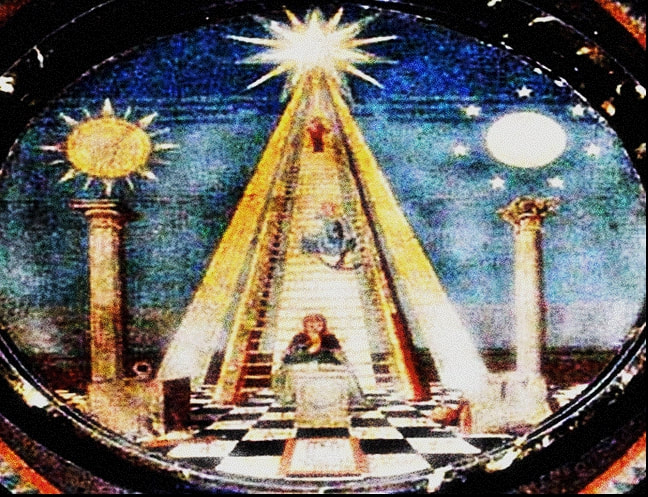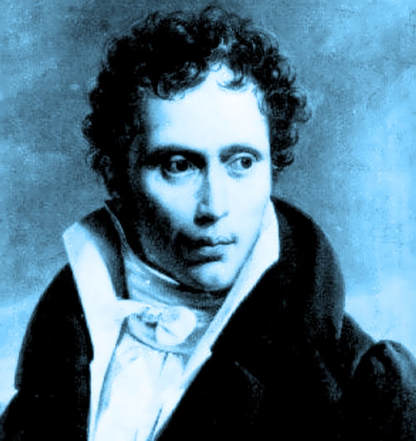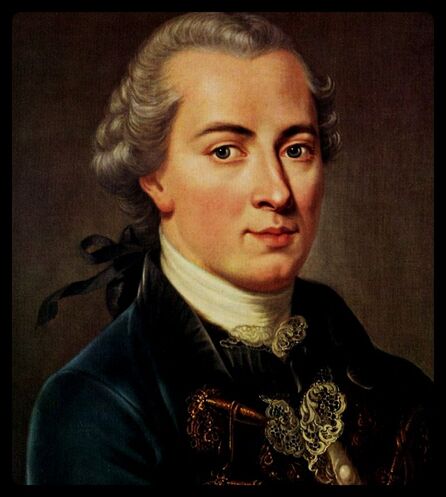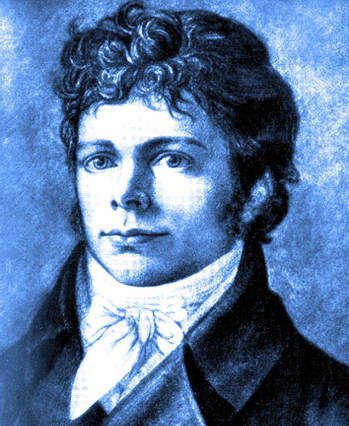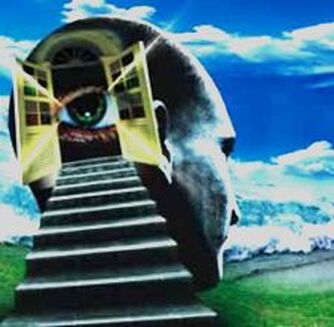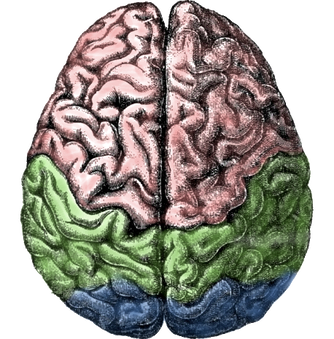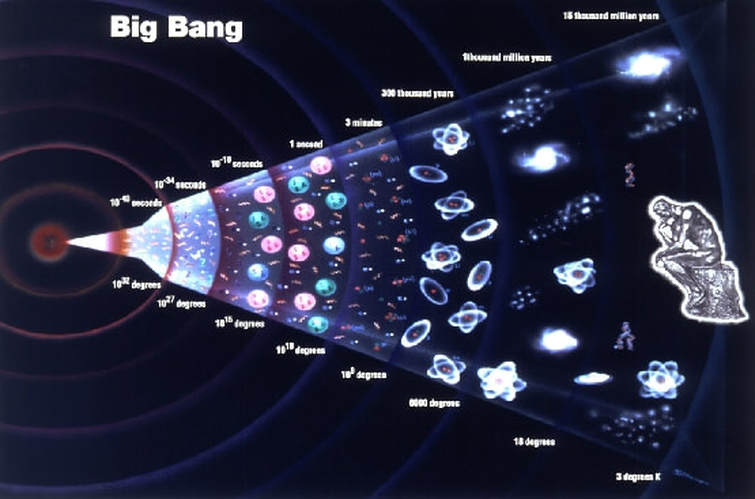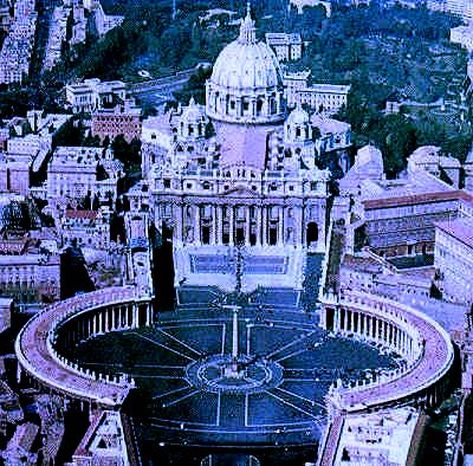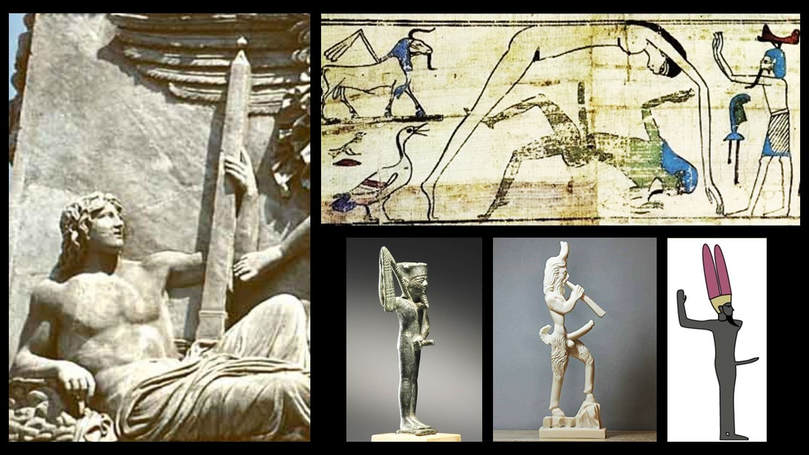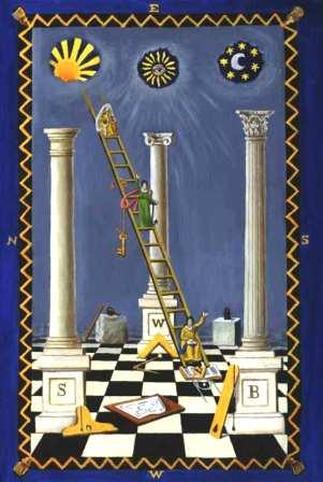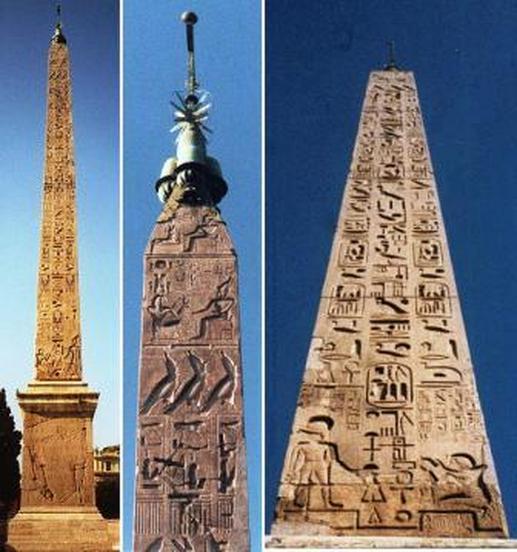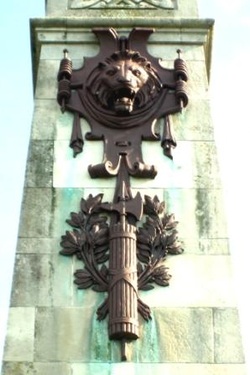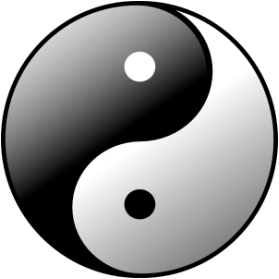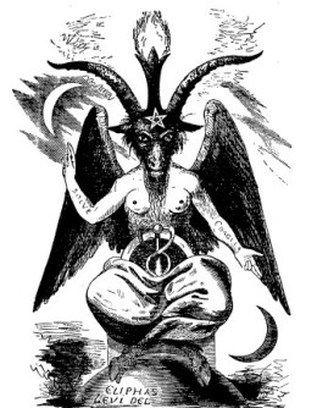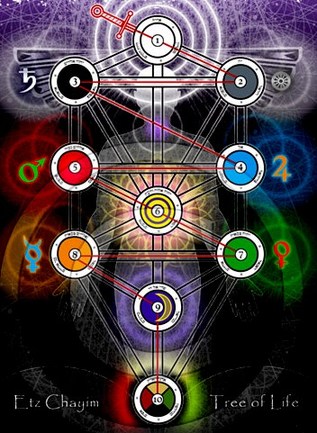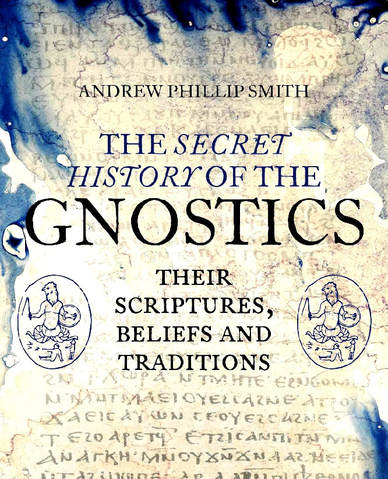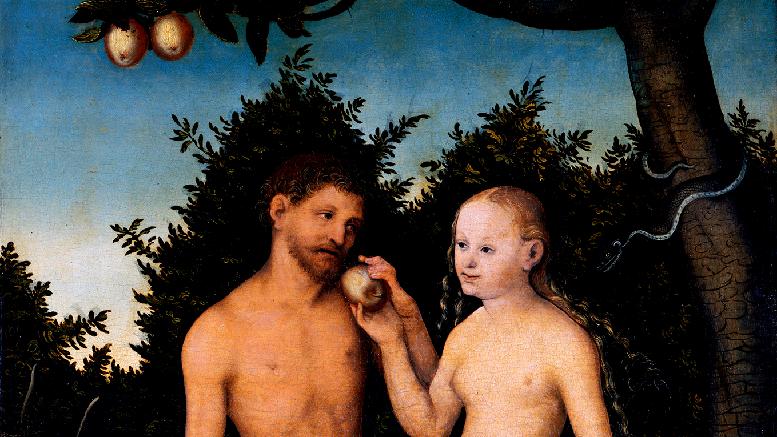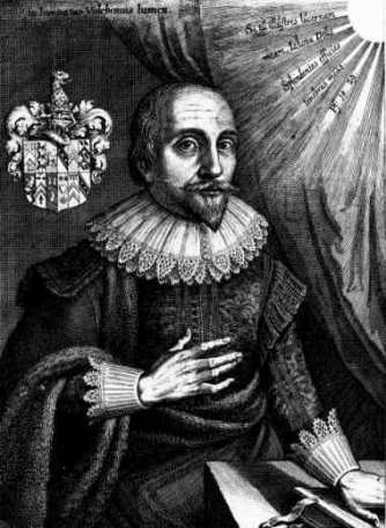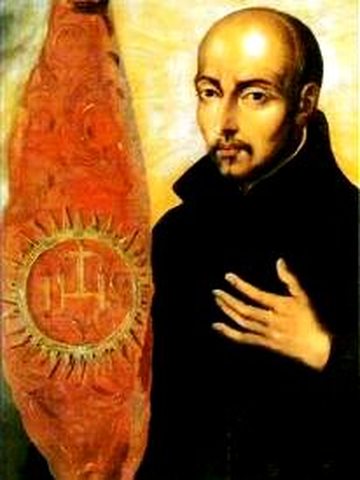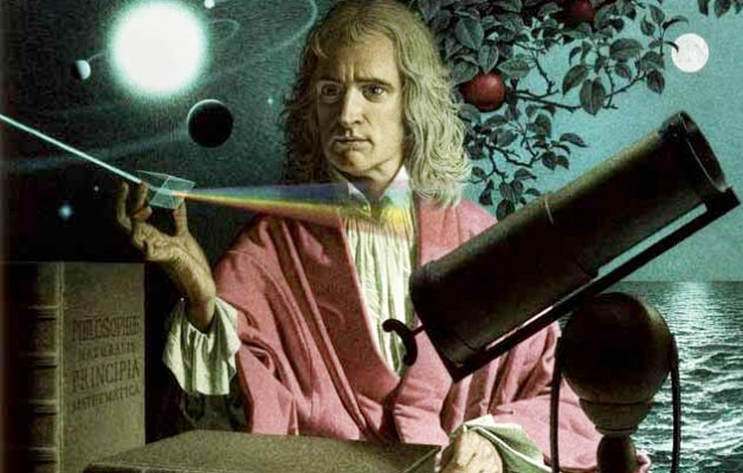Light, Magic, Masonry
by Michael Tsarion
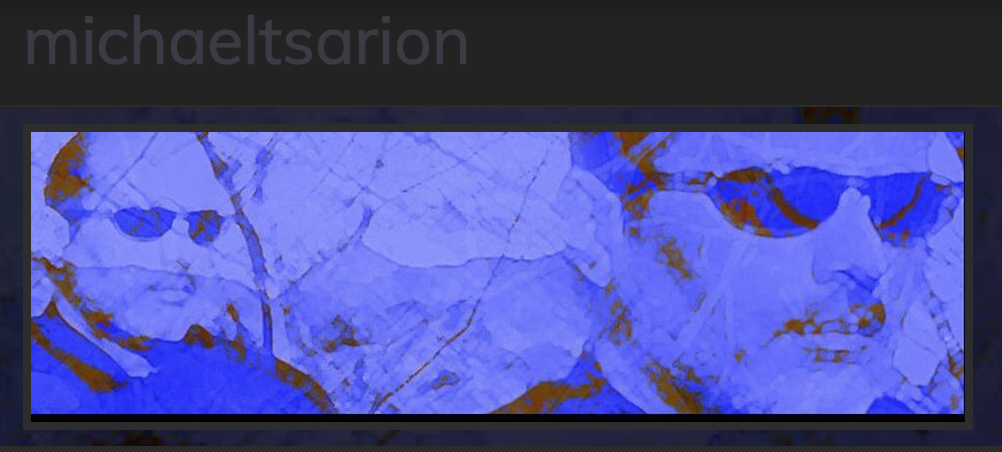 michaeltsarion.com
michaeltsarion.com
– Kersey Graves (Bible of Bibles, 1863) |
Light As Thought
|
There are two kinds of thinking operating simultaneously – thinking with the brain and thinking with the mind. The mind and the brain are not the same thing. The latter is basically an organic machine programmed by worldly experiences during our lifetime. The former is a phylogenetic inheritance or archive containing the enfolded experiences and understanding of all men and women who lived before our time. Their myriad experiences are recorded in the so-called “Akashic Record” or “Ancestral Mind,” or in psychological parlance the “Collective Unconscious.” Indeed, thinking with the mind might turn out to be quite a delusion. It might turn out that we think for the mind.
Contrary to what we falsely believe, we do not come into this world as innocents with blank minds. Innocence, as William Blake knew, merely describes the temporary state of mind as it apprehends the world’s phenomena for the first time. However, encountering a world and making sense of it requires neurological and bioenergetic processes which are both deep and infinitely complex. They are as yet far beyond scientific understanding. This is because their operations are subtle, fluid and interoceptive.
According to hardline Materialists the human brain’s neuronal sophistication is due entirely to the millennia-long process of evolution. If, however, the essence of all cognitive processes is light, it becomes harder for us to imagine consciousness arising due to blind processes commonly conceived by Materialists. After all, light doesn’t evolve.
Of course to a young brain, encountering a world of entities and objects for the first time, everything is new, fresh, exciting and incomprehensible. Originally we do not even try to overly reflect on what happens to us or on what we see and experience. We simply experience. We are less creatures of thought than we are of desire. As we age, however, we gain experience and relative innocence flees never to return. It vanishes when we begin contemplating our experiences, and when a mind begins to Self-reflexively contemplate itself, or what it imagines to be itself. And as some philosophers note, it appears that painful experiences often compel us to philosophically think about the meaning of existence. As Schopenhauer quipped, “Without pain, life is meaningless.”
As we grow we certainly continue craving the freshness and spontaneity of early youth. However, we fail to realize that it is our own minds, our consciousness, that needs to be renewed each day, not our various experiences. A mind narrow, superficial, narcissistic and toxic can hardly be expected to function in a healthy, spontaneous manner, or know anything as a certainty. An insensitive mind continues to have experiences and relationships, but few that are deep and meaningful. A docile dogma-ridden mind is content to take orders and be led, clustering with minds of its own passive hedonic kind, pathologically afraid of independence, silence and aloneness.
Sadly, even relatively sharp open minds may not give the underlying paradoxes of existence and consciousness the thought they deserve. Aggressive minds are fast and acquisitive, but seek challenges of a more mundane, ultimately undemanding kind. These types prefer to adopt a detached scientific stance when encountering the mysteries of life, believing that the solutions to every major problem lie in the future. They believe we must continue to scientifically and dispassionately probe nature’s secrets. In doing so, however, they continually find their absurd theories of a mindless, mechanical (deterministic) universe turning to dust.
The scientist’s intellectual struggle can be likened to a great quest. Grasping the final answer is a kind of victory over ignorance. For these types it is convenient to think of human consciousness as having evolved from primitive levels to more advanced ones. Most men of science think of our physical and psychological maturation as a kind of ascent from darker, lower states. They are not inclined to think of it as Plato did, as a re-learning or remembering of lost knowledge buried in the deep recesses of the psyche.
Nevertheless, despite the intractability of hardline Materialists, papers fly and castles burn. The foundations of their physicalist paradigms are not holding up under the welter of new discoveries about the brain and its complex functions:
|
Probably the greatest mystery about consciousness is the one addressed by German philosopher Immanuel Kant in the eighteenth century. In short, Kant drew attention to the mind’s innate Self-reflexive objectifying ability. How are we able to stand back from ourselves and objectively view ourselves as we would another person or external object? How do we think about thinking and observe ourselves thinking? How are we Self-aware? Sometimes it seems as if there are two minds at work. It’s not as far-fetched as it sounds, given that we do indeed possess two brains – a right and left hemisphere.
That a single mind possesses this extraordinary specular ability is crucial to Idealists. It led Kant to develop his philosophy of Transcendental Idealism. The capacity was for him the ground of philosophy. The innate transcendental categories of mind not only provide us with knowledge of reality, they also provide us with Self-knowledge. As Descartes emphasized, although thinking can doubt everything that exists, it cannot doubt itself, its own existence. Thus Descartes believed he had established the ground of metaphysics – the Self.
My mind’s extraordinary capacity for Self-objectification not only posits my raw material existence, it permits me to know I exist and value my existence. Such Self-apprehension would be impossible, Kant thought, if man was nothing more than an evolved animal. The capacity exists because man is to act and think in ways that transcend his carnal nature. Man occupies not only the physiosphere and biosphere, but the noosphere or realm of pure thought. He is not merely to survive as an anomalous super-efficient beast among beasts on an inclement earth, he is to awaken his spiritual identity and establish the perfect moral society.
Taking his cues from Descartes and Kant, Schopenhauer believed that the ground or basis of philosophy was man’s epistemological and ontological ability to know himself from the inside. Man’s distinctive capacity for introspection is unique and far beyond that of other species. Why is this the case? If we have evolved from an accidental mechanical process of evolution, logically we must be as other animals are, not as we are. Yet clearly we aren’t the same as other animals that entirely lack transcendental capacities. How is this awesome difference explained? It isn’t explained by Materialists who avoid the question and its ramifications for their absurd reductionist paradigm.
|
|
|
The light of conscious thought is an emanation of the dark soil of emotion. Neurologically speaking, the left-brain’s structures and systems arise from those of the right-brain which contains and preserves every emotion we’ve felt since our time in utero. What we call Self emanates from this psychic seedbed. If this process results in conscious awareness, as we know it does, it can’t be reduced to a material process as commonly conceived by Physicalists. We may still understand the process as “natural,” as long as we radically revise our concept of nature, along the lines taught by the great German Idealist Friedrich Schelling.
But let us not conceive of emotion as static. The very word denotes movement and process. What we call feeling is a dynamic moment by moment evaluation and re-evaluation of Self and world. This is the background of mood or stimmung that so fascinated German philosopher Martin Heidegger. It might be said that our infinitely complex emotional systems and subsystems give rise to the light of conscious awareness which flickers, dims and even snuffs out if emotional interoception is disturbed and discombobulated. The underlying nature of these emotional systems is beyond the comprehension of Materialists and reductionists, but not of Idealists or Mystics who have long explained it. They know that emotional intelligence provides the interface between spiritual and material dimensions. They also know that no amount of intellectualizing will ever furnish us with proof of Spirit’s existence. Hence the bankruptcy and failure of Materialistic science:
|
|
|
We see from this that our consciousness is a matter of feeling which implies sensitivity. The Materialist’s absurd philosophy is a direct result of his lack of sensitivity, which is why we waste time intellectualizing with him over the nature of reality. We can’t make another person feel deeply about themselves or the world of which they are a part. We haven’t the right to intrude into their inner worlds. Until something drastic happens to awaken the all-important sensitivity – the Knowledge of the Heart – the Materialist remains impervious to the presence of the Great Ultimate.
|
|
German philosopher Immanuel Kant (1724–1804) whose radical ideas changed the face of metaphysics forever. Central to his philosophy of Transcendental Idealism was the elusive “noumenal” or “noumenon” – or so-called “thing in itself,” which supposedly hides behind and causes the world of appearances. For centuries thinkers have pondered on this aspect of his teachings, wondering what the noumenon could be like. As far as Kant was concerned, it transcends thought and, as such, can never be apprehended by the senses or by reason. In my opinion, the noumenon or thing in itself is nothing more than feeling. It is the deep rapturous feeling experienced during profound introspection. In this sense, the noumenon is the boundless Mystery, and one’s indescribable experience in its presence. This relationship is not, however, to be conflated with any supernatural entity, i.e., “God.” The encounter is solely with Self and the Mystery of Self. This is Kant’s noumenon, there can be no other. Displacing Mystery to the impersonal, immaterial and transcendent leads only to drastic errors, impasses, delusions and conflicts. This Mystery of Self is the central precept of true Mysticism. No God need apply.
|
|
|
|
The forgotten German Idealist Friedrich Schelling (1775–1854). Like Johann Fichte before him, he understood that a Self’s innate capacity to posit itself as both subject and object (the I and Not-I) is the foundation of philosophy.
|
|
|
|
|
Living in the world involves sensing the world. This sensing of an external world is achieved by way of the body and its senses; the most important and sensitive sense being sight. Reality is primarily a visual experience.
Through sight we apparently receive the vast majority of our knowledge about the world and reality. Obviously, seeing occurs by way of the eyes. However, vision apparently depends upon the light that transmits or conducts a portion of the world’s contents to the brain. Light is as they say knowledge. It is, as I said, also emotion. So is our conception of the world (our ideas of and feeling toward it) not a matter of light rather than objects? Logically we are in a relationship with the former not the latter. It is light which gives us both an apparently external world and our inner ideas and feelings about it.
|
|
|
Our insensitivity in this regard leaves us open to subtle manipulation from those extremely well acquainted with the many intriguing properties of light; from those who think of themselves as elites and alumni, as illumined, illustrious and elevated. More on this as we go.
Interestingly the entrance of ithyphallic beams of light into the vesica-shaped eye can be likened to the sexual act. The penetration of light is experienced as an erotic act by the brain which is after all a mass of super-sensitive nerves.
This subtle optical experience may be compared to a miniature orgasm small enough to not be noticed consciously but strong enough to be stimulate and entrain.
Because of the inherent eroticism of light we literally become addicted to external light and its symbols. In one sense we are light-infatuated.
However light is dualistic and polarized because, as an active beam, it has a source and a receptacle. Moreover, wherever we find light we also find shadow; something else that hasn’t “evolved.” Which one, we ask, gives birth to the other?
But what happens if this is only a part of the story of light. As many philosophers stressed, external light is but the simulacrum of internal psychic light. Is this true, and what if the light of mind originates somewhere other than the sun above our heads? What if we have been deluded by about the origin of light?
What this means psychologically and neurobiologically has to do with the asymmetrical relationship between the hemispheres of the brain. The left-brain isn’t focused on the light of the external world, as we believe, but on that which emanates from the mysterious reaches of the right-brain. This is the reason why light has always been mysterious to us. It is the inner bioenergetic light that is the mystery, not the external kind. It is the light of our own being which fascinates and leads us to quest after the truth of ourselves.
It is the right-brain’s vision of reality that is computed by the left-brain and which, after radical editing and refraction by the latter, becomes our impoverished image of reality. The left-brain, as it were, digitizes the right-brain’s holistic vision. It also concretizes it, giving us the false impression of a hard material world comprised of hard material objects and entities. Materialist outlooks and theories – of a Big Bang and a beginning of time, etc – make sense only within the limited contextual framework manufactured by the left-brain (or ego). Nevertheless, for all its industry the left-brain is handicapped. Its processed simulacrum of reality, although reduced and desacralized, is still composed of light emanating from the dark mysterious reaches of the psyche. That light is and always will be numinous and true, even in the hands of the Demiurge.
We now understand the magical nature of light. The world’s light entering our eyes doesn’t reveal the world after all. It’s the psychic light emanating from our own right-hemisphere that does the trick. We only surmise that its origin is external sunlight. Maybe it is and maybe not. Maybe externality, like matter, is simply a mental idea. In any case the mind’s own light presents us with a processed digitized image of the apparently external world, reduced, refracted and desacralized by the editing process of the left-hemisphere.
What a deathblow for Materialism if it turns out that psychic and physical light are of the same substance. What comes of Cartesian theories of hard dualism? What comes of the subject versus object and mind versus matter divisions? What happens to the traditional scientific dogma of Darwinian evolution?
but are not. Why is this? Do we in fact possess two brains?
If God is light, does he have a dark side? Few can account for the strange ambivalence within the nature of God. We will, however, account for it once we realize the all-important connections between “God” and “Devil” – the right and left hemispheres of the brain.
…monotheism does not mirror human society. Humans are first and foremost social animals. A deity who was alone, not by choice but because there were no other companions for Him, was a concept without parallel in human society. The god of the Israelites did not have a wife, a son, a daughter, or a mother – Leonard Shlain (The Alphabet Versus the Goddess) |
So much for the picture of reality supplied by the left-hemisphere of our brains. It is neither holistic nor natural. On the contrary, it is the cause of the mental and emotional desensitization leading to Materialist outlooks and arguments.
Even more problematically, the left-brain’s false image of reality includes our image and idea of Self. It too is highly condensed, disfigured and impoverished. In psychological parlance this false idea is known as the ego-ideal. It is in turn highly influenced by the superego, which might be described as the inner “Demiurge,” the psychic representative of parents and society. As Jung and others stressed, man does not operate in the world as an authentic Self, but as a pseudo- or counterfeit-self. He wears the mask or persona and participates in the social masquerade. He lives as a prisoner of his own mind, getting more armored, insensitive, disenchanted, addicted and outer-directed by the hour.
|
|
The left-brain or ego had a beginning. This event is projected outward by the left-brain, resulting in scientific hogwash about the universe itself having a beginning. Actually, cosmically, there is no such thing as a “beginning.” In fact the word connotes a process, which is what a beginning is as soon as it begins. So while Materialists irrationally focus on the word “beginning,” the Idealist prefers to focus on the word “process” and the sense it makes for all existence. (Here & Here for more…)
|
|
|
|
The signature of the left-brain is the mathematical concept zero. Nature has no such principle, consciousness does. The zero for consciousness marks the advent of left-brain awareness and cognition, already out of sync with reality. The whole of western science and digital technology is based on an absurd phantasmagoria.
|
|
|
|
|
What does all this have to do with Atonism, you ask. Well, it is vital for us to understand how important these metaphysical principles are to the elites within the secret societies, particularly to Setian-Atonists whose ideas about light are very eccentric. Foremost among these ideas and the secret of their power over humanity is the property of light which conceals and blinds.
As I explain in Volume Two, to Atonists, Templars and Masons, light serves as a veil behind which another more exotic and strictly private form of worship proceeds. I refer to this phenomenon as the dark side of the sun. The Setian-Atonist manipulates the symbols of the sun and of light to bedazzle and solarize the minds of the masses. The outcome of this industry we know as religion.
Judeo-Christianity works and has lasted through the centuries because it is solar and phallic. In writings to his Masonic brethren, Albert Pike reveals the esoteric connections between light and phallicism:
|
Yekun becomes Jakin, one of the pillars at the gates of Solomon’s (Aton’s) Temple. We see these two stately pillars at the portals of Masonic lodges and important government buildings. These phallic altars to Set and Aton can be found in most civic centers in the world as the obelisk, tower or single erect stone monument. They stand in the center of prominent city squares and near many banks, churches and educational institutions. The very word phallic comes from phalos which meaning “white” or “bright.” It is akin to phaos that also means “light.”
|
|
|
The rise of masculine power and of patriarchal society probably started when man began to accumulate personal, as over against communal, property and found that his personal strength and prowess could increase his personal possessions. This change in secular power coincided with the rise of sun worship under a male priesthood…Sun worship was usually introduced and established by an edict of a military dictator, as happened in Babylon and Egypt, and probably other countries as well – (Woman’s Mysteries)
|
|
|
The correlation of consciousness with masculinity culminates in the development of science, as an attempt by the masculine spirit to emancipate itself from the power of the unconscious…We call this path “ascent” because we experience consciousness and the world of light as being “above” us and unconscious and darkness “below” still under the spell of the primitive symbolism which associates the upright posture of the human figure with the development of the head and the rest of the “higher” centers of consciousness – (The Origin and Evolution of Consciousness)
|
Of course this begs the all-important question of what caused the rise of phallicism in the first place. The exaggeration of the principle in religion and culture must have a reason. Why was the feminine principle considered threatening? Should such a threat exist, is it responsible for the disastrous irrational skewing of masculinity and solar worship? Our view of history and consciousness inverts based on the answer to this all-important question.
We find out just how important light in this hyper-phallic mode is to Masons from one of their most distinguished members, Albert Mackey, who wrote several books on the meaning of Masonry and its various rites and traditions. In The Symbolism of Freemasonry, he added a chapter on light and what it means to a Mason:
|
…here again we have in Masonry that old and often-repeated allusion to sun-worship, which has already been seen in the officers of a lodge, and in the point within a circle. And as the circumambulation is made around the lodge, just as the sun was supposed to move around the earth, we are brought back to the original symbolism with which we commenced—that the lodge is a symbol of the world. This rite of intrusting is, of course, divided into several parts or periods; for the aporreta, or secret things of Masonry, are not to be given at once, but in gradual progression. It begins, however, with the communication of LIGHT, which, although but a preparation for the development of the mysteries which are to follow, must be considered as one of the most important symbols in the whole science of masonic symbolism. Light was, in accordance with this old religious sentiment, the great object of attainment in all the ancient religious Mysteries. It was there, as it is now, in Masonry, made the symbol of truth and knowledge. This was always its ancient symbolism, and we must never lose sight of this emblematic meaning, when we are considering the nature and signification of masonic light. When the candidate makes a demand for light, it is not merely for that material light which is to remove a physical darkness; that is only the outward form, which conceals the inward symbolism. He craves an intellectual illumination which will dispel the darkness of mental and moral ignorance, and bring to his view, as an eye-witness, the sublime truths of religion, philosophy, and science, which it is the great design of Freemasonry to teach. |
We see from this that we are in fact dealing with two modes of dualism. There is the polarization of light and its nemesis, and the polarity within light itself. In other words, that which seeks to overcome dualism is itself divided.
Mackey then address the peculiar dualism of light. His words go to the heart of our inquiry:
|
|
Light was venerated because it was an emanation from the sun, and, in the materialism of the ancient faith, light and darkness were both personified as positive existences, the one being the enemy of the other. Two principles were thus supposed to reign over the world, antagonistic to each other, and each alternately presiding over the destinies of mankind. The contests between the good and evil principle, symbolized by light and darkness, composed a very large part of the ancient mythology in all countries.
|
The obelisk directs our attention upward toward the sun. But why are we infatuated with light? Why is it mysterious to us at all, and who manipulates our fascination with light?
As I show throughout my work, cities have been meticulously designed and laid out by Masons. Those who live within the perimeters of cities unconsciously partake in Masonic rituals. The word city comes from the same root as cteis, meaning “vagina.” Similarly, the term hall comes from phallus, meaning “penis.”
In one context, for princes and disciples of light the phallus has apotropaic properties. In other words it wards off evil. Emphasizing the antipathy between light and darkness, and masculine and feminine polarities, William Sterling writes:
|
|
The Vesica was also regarded as a baneful object under the name of the “Evil Eye,” and the charm most generally employed to avert the dread effects of its fascination was the Phallus – (The Canon, 1897) Since it was supposed that the generation of the world was accomplished after the manner of men, we must conceive the Macrocosm or celestial Adam stretched within the sphere of the Zodiac, so that the center of his body (the phallus) coincides with the center of the universe occupied by the earth and the elements – ibid
|
Regardless of which is older, solar or phallic worship, they were finally conflated
by those who understood the power of light and libido or sexual energy. Jesus and
the Buddha are frequently subtextually depicted as phallic deities, and ancient images of penises were stylized to look like rampant bulls, lions and other zoomorphs. TheBiblical Adam was modeled after the Egyptian Atum, a progenitor god and great masturbator. – often representing the primordial mound – are filled with steeples, towers, obelisks, gnomons and monoliths, representing the virility of the solar gods. No one wants to worship a weak god and “…everyone votes for a dictator.” (Here for more…) …the pyramid was erected in honor of the sun – Albert Pike
The obelisk was…consecrated to the sun – Albert PikeIn Egypt the obelisk stood for the very presence of the Sun God himself – Carl Claudy (Introduction to Freemasonry)
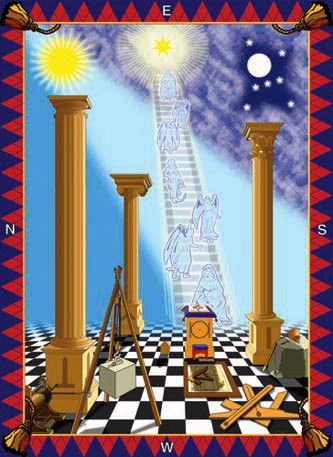
The gods of light are phallic. Here we see a Masonic tracing board with three columns or pillars – Doric, Corinthian and Ionic. (The Doric is the oldest form, symbolizing the male body and inseminating cause of all being, the phallic Jehovah. The Corinthian being tall and slim represents the young virgin or receptacle. The Ionic (from Yoni) represents the matriarchal principle, the genetrix or goddess. Asherah or Shekinah) The three columns or pillars represent the phallic worship which goes on behind closed doors. Each column’s design represents a specific degree of initiation into the Mithraic or Solar Cult. Dionysian ritualistic motifs are commonly found in Masonry, Templarism and the three major world religions. In Egypt Osiris was symbolized by the so-called Djed or Tat column. His resurrection was commemorated by the ritual erection of a large pillar from the horizontal to the vertical position. (Here for more…) |
|
|
Three obelisks in the city of Rome. There are presently thirteen obelisks there in all, imported from Egypt. There are 21 altogether left on the planet.
|
|
|
Rene Magritte |
Eyes of the Dragon
Belgian surrealist Rene Magritte was fascinated with the strange manner in which light worked upon the human mind. He wisely remarked: Everything that we see obscures something else we want to see Like Goethe, Rembrandt, Vermeer, M. C. Escher, Salvador Dali, Georges De Chirico, and other philosophically-minded artists obsessed with the physical and metaphysical properties of light, Magritte was referring to the remarkable ability of human beings to believe in ideas of reality rather than in reality itself.
|
He was speaking about the strange antipathy that apparently exists between idea and reality, appearance and fact, deception and truth, darkness and light.
This antipathy was a mystery that also perplexed oriental mystics who rendered the problem in their Yin Yang symbol known as the “Eyes of the Dragon.” This symbol expressed a similar concept as the two eyes of the Egyptian god Ra. The Masons also embodied the dichotomy in their checkerboard designs. For Masons the black squares represent human ignorance, while the white squares represent knowledge. Those who occupy the black squares of ignorance, so to speak, are not considered fully human or alive.
|
|
The so-called “Yin-Yang” is also known as the “Eyes of the Dragon.” It conveys the idea that within darkness hides light, and that within light hides darkness. One cannot exist without the other. The stronger a light shines, the darker the shadows cast. Does the wavy line between hemispheres (the shades of grey) keep them apart or bring them together? What causes imbalance and separation in the first place? How is unity restored?
|
|
|
|
Baphomet as conceived by occultist Eliphas Levi, depicted with the horns of wisdom and torch of knowledge. The arms point up and down to signify the dualism underlying creation and consciousness. The pose also represents growth and progress versus decay and regression. The female breasts and phallic caduceus indicate that Baphomet is an androgynous icon. The name Baphomet may derive from the Arabic word abufihamet, meaning “father of wisdom.” It may also derive from Ptah (father) and Ma’at (mother), or alternatively from Baphe (baptism) and Metis (wisdom). The theme appears to be the harmonization of imbalanced opposites, which begs the question of why polarization and imbalance occurs in the first place.
|
|
|
|
The whole earth has been made the wretched abode of ignorance and misery; and to priests and tyrants these dreadful effects are to be attributed – Elihu Palmer (Principles of Nature)
|
Certain Gnostic groups associated light with Lucifer – the Fallen Angel. Kabalists maintained that Lucifer fell from heaven like a zigzagging lightening flash. Light, they believe, descended downwards through ten major centers known as Sephiroth (or spheres). After its descent, the light, in a relatively diminished form, came to rest in the realm known as “Malkuth” – the physical plane or reality. The light which men normally perceive in the world, and that illumines thought inwardly, is of this diminished variety. Nevertheless, it has the ability to lead the initiated neophyte to higher grades and realities. Once the adept has reached the highest level, known as “Kether,” he is considered enlightened and all knowing. By following the light he comes to face his own psychic darkness and dirt. He must cleanse himself of impurity and overcome imperfection. He must bathe in the light, as it were, to eradicate ignorance. As a “Son of the Light” he believes everything that is imperfect to be of the darkness.
Malkuth sits between the two pillars known to Masons as “Jachin” and “Boaz.” Therefore, the sphere or sephira of Malkuth is the analog of Masonic temples and lodges of light that have their portals between two pillars. The temple represents the entrance of Malkuth. The number of Malkuth is 10. This number is written as TEN that obviously connotes ATEN or ATON. This is the reason why the headquarters of the British government is at TEN Downing Street.
The light or knowledge at this low level is so weak in magnitude and so far removed from the realm of pure spirit that only exceptionally wise and morally hygienic individuals can comprehend reality as it really is and see beyond the myriad illusions that infest the world and lower mind. These are the pneumatic rather than the hedonic types. They are vocational rather than merely occupational and recreational beings. They alone understand what is going on, and how left-brain systems stand in opposition to those of the deeper hemispheres of consciousness. They alone understand why the light and power wielded by agents of the Demiurge is always contextualized by difference, opposition and separation. Light in this mode cannot be true and real. It is by definition weak, transitory and illusory.
The Book of Revelation implicitly refers to the two kinds of light. The number 666 – esoteric number of the sun – and the number 144,000 represent the false and true light, as well as the uninitiated or profane mind versus the initiated sacred mind. Interestingly, both numbers have 9 as their digital root.

According to Albert Pike the ithyphallic pillars Jakin and Boaz represent the summer and winter solstices, and also the two zones of the sun’s rise and setting, known as the Akhet. In Egypt and other lands kings were crowned between the pillars or in front of one or other of them. In this way they represented the sun at the half way position between the Akhet or twin horizons. The twin globes also represent the earth and celestial sphere. The black and white squares represent ignorance and knowledge, overworld and underworld. Occult knowledge has long been associated with light but not in the way we commonly believe. Setian-Atonists worship light not for what it reveals but for what it conceals. They are disciples of the dark side of the sun. Their chosen forms of private worship proceeds behind a veil of light. We are told this loudly enough, but in a symbolic manner. Note the checkered floor pattern. Sadly, the dark side of the sun is not a concept that interests anyone other than Atonists and Architects of Control, so I need not waste ink saying anything more about it. (Here & Here for more…)
The place where the Pillars of Seth are said to have stood, is called Siriad, which may be taken to mean the place of Anubis, who marked the solstitial or midsummer sun, and it is therefore the region of the abode of the sun – William Stirling (The Canon) |
What do we learn from all this? What do the Black Lodge’s sorcerers know about minds and light that we do not? From what we read here it stands to reason that the light and phallicism wielded by occult societies is that which emanates from the left-brain or psychic Demiurge. This hemisphere is the servant that has overthrown its master in order to usurp its place and function. The servant’s pseudo-reality has replaced reality, although the former is brightly lit and full of distraction and promise for the infantile minds born into it.
The left-brain’s or ego’s inhibitory function is well known to neurologists who note that the corpus callosum connecting the left and right hemispheres is larger and more dense in males, resulting in less harmonization and communication between hemispheres. Hence the connection between masculinity and left-brain cognition. Although the existence of the left-brain’s functions makes us conscious, there’s a lot more to the advent of the ego and Self than neurologists presently understand. They fail to address what kind of consciousness – now repressed – would exist without the draconian oppressiveness and exclusion of the left-brain. They fail to address the impoverished phantasmagoria presented by the left-brain, which omits everything in reality that threatens its dominion and expansion. They are for the most part apologists for the left-brain’s refracted chimera. It’s not conducive for them to question their master’s authorized edition of reality.
It is clear, therefore, that our hallucinatory vision of the world as a concrete material manifestation, and our fixation on phallic and ithyphallic phenomena, indicate our enslavement to the left-brain’s preferred but contrived mode of cognition. Our fixations on dualism and language (particularly metaphorical language) are also indicative of this. The power and force we commonly associate with light and phallic sexuality is a power inferior to that of the right-brain and deeper hemispheres of consciousness. But this deeper more numinous flow of Spirit is invisible to us due to left-brain editing. It is also unknown due to our insensitivity, brought about by our reliance on misleaders in society, and our chronic craving for the approval of the misguided.
|
|
Like the Manicheans and other related sects, the Gnostics had a glimmer of the truth but ultimately got it wildly wrong. The split between reality and pseudo-reality isn’t a metaphysical problem as much as it is a neurological and epistemological one. It’s a condition of our minds and brains. Satan the Demiurge isn’t a disembodied supernatural archon ruling over the universe or a series of degraded universes, it’s the servant in the head which usurped the role of its master. (See my Path of the Fool series for a thorough explanation of Gnosticism.)
|
|
|
|
Genesis tells us that the male preceded the female, Adam gives birth to Eve. Millions believed it. As far as the left-brain is concerned, it came before the right-brain. The more absurd the story, the more we believe it. There doesn’t seem to have been much progress after all. A deity who was alone, not by choice but because there were no other companions for Him, was a concept without parallel in human society. The god of the Israelites did not have a wife, a son, a daughter, or a mother – Leonard Shlain
|
|
|
|
…nature is nothing but the organ of self-consciousness, and everything in nature is only necessary because only through such a nature can self-consciousness be achieved – Friedrich Schelling
|
Since the left-brain (ego or pseudo-self) projects itself into the future and expects its perfection to come about tomorrow, it finds itself caught in a paradox, because tomorrow does not exist, being merely a projection of the ego. Nevertheless, the reality is that for every step the ego takes toward this phantasmagoria of perfection the more its imperfection is instantiated.
What is really happening is that under the direction of the left-brain (or ego), men have exchanged love for power, and by so doing erect oppressive hierarchies of control in which one is bound to covet and crave increased power and dominance. Although this can be achieved by rising on one’s merits, most men find it easier to simply push others down in order to feel high. Most modern hierarchies function in this malignant manner. In fact they are deliberately designed to operate this way, to filter good moral men out, thereby enabling corrupt immoral types to easily ascend to higher levels of world control. Hence the success of authoritarianism and prevalence of master-slave relationships on all levels and in all places.
As I’ve said elsewhere, culture is the mirror of the ego, whereas nature is the mirror of the Imperial Self. The numinous negentropic intelligence of nature threatens the ego deeply. The latter’s power is finite while the universe’s energy is infinite. The ego dies while nature is everlasting. In ancient times, before the rise of corrupt religions, the Druids instructed men to revere this infinite power-source and obey nature’s ordinances. Their teaching was completely antithetical to that of the many despots and demagogues of later ages, desperate to bring nature under control.
Schelling said that nature is visible spirit, and spirit invisible nature. We can’t possibly understand the second part of the profound aphorism until we grasp the meaning of the first part. We do so when we understand Schelling’s conception of nature as an immense process by which Spirit realizes itself – God delving into the mystery of himself, thereby spontaneously giving rise to nature and all creation as emanations of this august process of Self-realization.
As a manifestation of the desire of Spirit, nature is not to be seen as separate to Spirit. On the contrary, nature is Spirit in a certain dynamic form and aspect, that eventually develops into humans who, as emanations of nature, are the beings in which Spirit, Geist or Logos completes its process of Self-realization. For Goethe, Hegel and Schelling the observation of nature’s ways provides the clearest insight into the anatomy of Spirit. The anatomy of the one reveals the anatomy of the other. As Schelling said, “come to physics and see the eternal.”
For these Idealists, light is the numinous connective tissue between the spiritual and natural. It is so to speak the radiant “DNA” infusing the universe and animating the physiosphere, biosphere and noosphere. Its origin is, however, beyond them all.
|
|
Doctor Robert Fludd (1574-1637) was an alchemist, astrologer and Rosicrucian. We see him “illumined” by the rays of the sun. He is a Prince of Light. His father worked for Queen Elizabeth I, and was a high ranking court official. Fludd’s right hand cryptically connotes the letter “W,” which stands for the constellation known as Cassiopeia, which is shaped like a large letter “W.” The “Cassiopeans” include Dr. John Dee, Edward Kelley, Tycho Brahe, Fludd, and a host of other British and European sorcerers of the sixteenth century. In the year 1572 Cassiopeia was strangely lit for a period, fascinating Dee, Fludd, Edward Kelley, Sir Walter Raleigh, Sir Philip Sidney, and their illustrious stargazing associates. It is likely that the Cassiopeans believed a new era of light had begun, and that they were its alumni. (See my Atlantis book for more on this…) Some prefer to see the hand-sign as connoting the letter “M.” In this case it may refer to the constellation of Virgo, sacred to the Female Illuminati. It may also indicates not only Masonic membership and rank, but the possession of occult secrets. In this case the letter would have appealed to occultists because, unlike every other letter in the alphabet, the lips are held closed when pronouncing the letter M.
|
|
|
|
The current body of accumulated data makes it difficult to sustain the modern assumption that the universe as a whole is best understood as a blind, mechanistic phenomenon of ultimately random processes with which human consciousness is fundamentally incoherent, and in which the Earth and human beings are ultimately peripheral and insignificant – Richard Tarnas (Cosmos and Psyche)
|
These facts about light, mind, nature and Spirit are alien to us because we have, in our present solarized technocratic world, successfully divided reality into a myriad conflicting parts and have instigated unsustainable authoritarian meritocracies bearing no resemblance to the holarchic structure of nature. The sociopolitical nightmare is merely the external reproduction of our psychic imbalance, brought about by the left-brain’s subversion of the right-brain’s holistic vision of nature’s true nature.
Like crazed Robinson Crusoes we reign supreme over our desacralized island-universes, believing ourselves to be ever so civilized, enlightened and progressive. The situation will only degrade and worsen until we return to nature with a deepened sensitivity, thereby banishing the false light generated by the left-brain.
|
…thinking which does not start from and continue in close relation to its foundations in the physical universe must lead to falsity – Alvin Boyd Kuhn
|
Perhaps Mahatma Gandhi was right when he cynically said that civilization would be “a good idea,” and perhaps sociologist Konrad Lorenz was right when he humorously speculated that man is merely the missing link between apes and human beings. Perhaps, in persisting with our vain compulsion to repair what isn’t broken and improve upon perfection, we have finally lost our vision of the inherent order and beauty around us that is not plugged-in, wasteful or finite, and which operates flawlessly without thought or consciousness as we know it. Our insensitivity prevents us looking deeply into that pristine mirror of nature to see all we are and should be.
RELEVANT LINKS
Schellingzone.com
Mysticism: Truth or Falsity
Bryan Magee on Schopenhauer
Sex, Ecology & Spirituality (Ken Wilber)
The Master & His Emissary (Iain McGilchrist)
Nature’s Mind (Michael S. Gazzaniga)
The Ancestral Mind (Gregg Jacobs)
The End of Materialism (Charles Tart)
The Illusion of Determinism (Edwin Locke)
Cosmos and Psyche (Richard Tarnas)
The Science Delusion (Richard Sheldrake)
Skeptical About Skeptics (Cathi Carol)
The Brain & Inner World (Mark Solms)
Designed to Evolve (Christopher Davis)
Biocentrism (Robert Lanza)
Beyond Physicalism (Edward Kelly)
The Irreducible Mind (Michael Grosso)
The Embodied Mind (Francesco Varela)
The Immortal Mind (Ervin Lazlo)
The Intelligence of the Cosmos (Ervin Lazlo)
Emotional Intelligence (Daniel Goleman)
Art and Physics (Leonard Shlain)
Crimes of Reason (Stephen Braude)
The Alphabet Versus the Goddess (Leonard Shlain)
The Origin and Evolution of Consciousness (Erich Neumann)
The Origin of Consciousness/Bicameral Mind (Julian Jaynes)
Light and Consciousness (Sylvia Zietze)
The Secret of Light (Walter Russell)
Catching the Light (Arthur Zajonc)
Sun of God (Gregory Sams)
The Light of Civilization (Nicholas Haggar)
The Phenomenon of Man – (Teilhard de Chardin)
The Big Bang Never Happened (Eric Lerner)
Theory of Color (Johann Wolfgang von Goethe)
Phenomenology of Perception (Maurice Merleau-Ponty)
Phenomenology of Perception (Maurice Merleau-Ponty)
The Brain is not a Computer
What the Computer Still Can’t Do
Reign of the Phallus (Eva Keuls)
The Two Babylons (A. Hislop)
The Ghebers of Hebron (S. F. Dunlop)
Freemasonic Writings (Pike, Mackey, etc)
Book of the Words (Albert Pike)
Arthur Schopenhauer
Immanuel Kant
Primordial Mound (Benben)
Raising the Djed
The Lingam
The Herma Stone
The Omphalos
Terminus
Evolution Hoax
Anamnesis
Noosphere
Holon
The Senses
Unus Mundi
Hylozoism
 All of our Links: https://linktr.ee/freedomiscallingyou
All of our Links: https://linktr.ee/freedomiscallingyou



